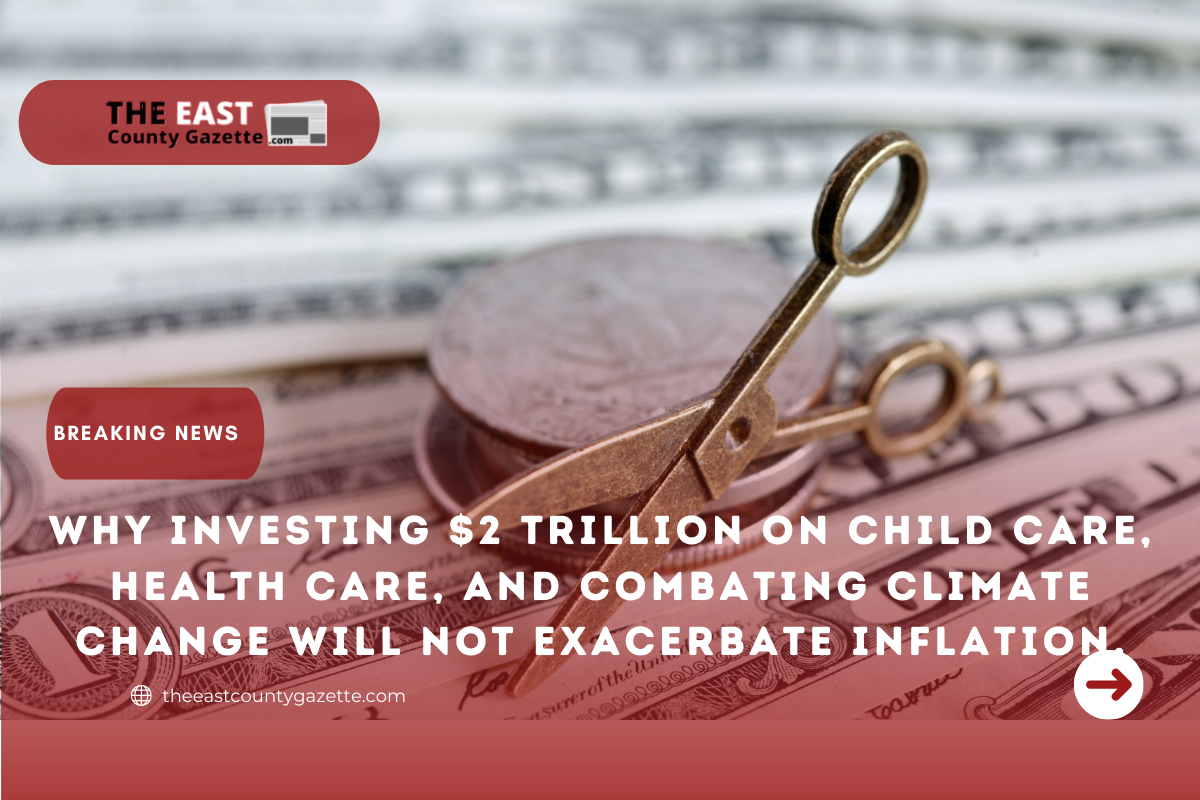Why Investing $2 Trillion on Child Care, Health Care, and Combating Climate Change Will Not Exacerbate Inflation.
President Joe Biden’s Build Back Better proposal has sparked widespread worry among critics, who fear it could exacerbate inflation, which is currently running at its fastest rate in over four decades.
Over the next decade, the Senate will debate an approximately US$2 trillion measure that was passed by the House of Representatives and would spend money on health care, education, combatting climate change, and a variety of other things.

Republicans and a small number of Democrats, including Sen. Joe Manchin of West Virginia, warn that the possibility of more spending driving inflation even higher is too huge a risk to take.
As an economist, I believe that these concerns are likely exaggerated to some extent. The reason behind this is as follows.
Read More: Get a Car Insurance Stimulus Check: $400 refunds are arriving to millions of drivers
Putting $2 trillion into Perspective
Inflation is certainly an issue at the moment, as seen by the Federal Reserve’s decision on December 15, 2021, to expedite its withdrawal of economic assistance.
Current statistics show that inflation, as measured by the yearly increase in the Consumer Price Index, was 6.8 percent in November 2021, according to the most recent available data. However, while this is the highest amount of inflation since 1982, it is still a long way from the double-digit inflation that was seen during that period.
The question then becomes: Could an extra significant increase in government expenditure lead inflation to accelerate even further?
It’s helpful to put the data into some sort of perspective in order to respond to this question.
The Build Back Better plan, which was authorized by the House of Representatives, will cost around $2 trillion and will be implemented over a 10-year period.
If the money is spent evenly over the year, it would amount to approximately $200 billion per year. That is only approximately 3% of the total amount of money the government expected to spend in 2021.
The gross domestic product (GDP), which is the total value of all products and services generated in a country, is another point of comparison. The Gross Domestic Product (GDP) of the United States is expected to reach $22.3 trillion in 2022. This means that the bill’s spending in the first year would amount to around 0.8 percent of GDP.
That, too, may not appear to be big, yet it is nonetheless significant. According to Goldman Sachs, the United States’ economy would increase at a rate of 3.8 percent in 2022.
If the additional spending were to transfer into increased economic activity on a dollar-for-dollar basis, it would have the potential to boost growth by more than one-fifth.
However, what truly matters, in this case, is how much money the bill would spend in excess of any taxes that would be raised to pay for it.
Higher taxes on the affluent and corporations, as proposed in the House version of the plan, would lower economic activity – by diverting money away from the economy – and therefore mitigate some of the effects of the spending that would stimulate the economy in the short term.
According to the Congressional Budget Office, the plan would increase the deficit by $150.7 billion over a ten-year period, or around $15 billion each year, on average. Even if this is divided evenly over the next ten years, it would amount to less than one-tenth of one percent in terms of gross domestic product.
Read More: Some states and cities offer stimulus checks and additional payments before Christmas! Check Here!
As a result, even if the proposed spending has an abnormally big influence on the economy, it will have a negligible impact on the whole economy at the macroeconomic level.
However, it will not have any effect on inflation.
Several supporters of the plan, including the White House and some economists, have gone even further in their opposition.
They have contended that by boosting the productive capacity of the economy – or its greatest potential production – the planned spending package will actually help to lower inflation.
This appears impossible to me, at least in light of the current level of consumer inflation. Historical evidence shows that a more productive economy can grow more quickly while exerting relatively minimal upward pressure on the price of goods and services.
That’s exactly what happened in the United States during the 1990s when the economy developed strongly while inflation was low.
Furthermore, it takes time for investments such as those outlined in the bill to result in increases in productivity and economic growth – which means that many of the benefits will take time to manifest themselves.
Current inflation is most likely a short-term problem caused by supply chain disruptions and pent-up demand, challenges that will not be remedied by increasing the economy’s productive capacity in the next five to ten years or even longer than that.
However, as previously said, investing $2 trillion to enhance access to affordable child care, combat climate change, and expand health insurance coverage is unlikely to make inflation worse.
Whatever the arguments in favor of or against the bill’s passage, I do not believe that its possible influence on inflation should be one of those considerations.

